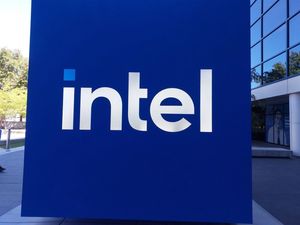
Washington D.C. – October 28, 2025 – The Federal Reserve is actively exploring the creation of "skinny" master accounts for cryptocurrency banks and other fintech firms, a groundbreaking move that could fundamentally reshape the integration of digital assets into the national financial system. This significant development was formally proposed by Federal Reserve Governor Christopher Waller on October 21, 2025, during a Payments Innovation Conference, where he tasked Fed staff with exploring the concept of these new "payment accounts." The announcement, coming just days ago, has sent ripples of cautious optimism throughout the crypto community, signaling a pivotal shift in the central bank's approach towards digital finance.
These "skinny" master accounts, also referred to as "payment accounts" or "limited-access" master accounts, represent a stripped-down version of the traditional master accounts held by federally chartered banks directly with the Fed. Unlike full master accounts, which offer a comprehensive suite of financial services, these new accounts are specifically designed to provide basic Federal Reserve payment services—such as direct access to Fedwire and FedNow—to legally eligible institutions primarily focused on payment innovation, including crypto firms and stablecoin issuers. This initiative is seen as a crucial step towards legitimizing the role of digital assets within the broader financial ecosystem, offering a potential solution to the long-standing "de-banking" issues faced by crypto-native companies and paving the way for more efficient, blockchain-backed payments.
Market Impact and Price Action
The Federal Reserve's exploration of "skinny" master accounts has been met with a largely positive, albeit cautiously optimistic, response from the crypto markets. This initiative, proposed on October 21, 2025, is interpreted as a significant step towards greater institutional acceptance and regulatory clarity, which historically fosters positive market sentiment. While the immediate, sharp price movements seen with some past regulatory announcements were not observed, the underlying sentiment suggests a bullish long-term outlook for major cryptocurrencies.
Bitcoin (BTC-USD) and Ethereum (ETH-USD), the two largest cryptocurrencies by market capitalization, are expected to be primary beneficiaries of this increased legitimacy. The very notion that the Federal Reserve is moving from viewing decentralized finance with "suspicion or scorn" to acknowledging it as "woven into the fabric" of finance provides a strong psychological boost. This enhanced credibility is anticipated to attract more institutional investors who have previously shied away due to regulatory ambiguity and operational friction. For instance, recent regulatory clarity, such as the approval of Ethereum ETFs earlier in 2025, significantly boosted market optimism and attracted substantial institutional investment into Ethereum (ETH-USD), leading to a rally nearing $5,000 in August 2025. Similarly, Bitcoin's (BTC-USD) all-time high of over $125,000 in October 2025 was partly attributed to a series of positive regulatory developments, of which this Fed proposal is a continuation.
Trading volumes across the cryptocurrency market are also poised for a significant increase. Direct access to the Fed's payment rails, bypassing traditional intermediary banks, is expected to reduce operational costs and friction for crypto firms, thereby stimulating more frequent and larger transactions. Data from Q3 2025 already showed Coinbase (NASDAQ: COIN) experiencing a 62% year-over-year increase in trading volume, largely driven by institutional activity. Furthermore, stablecoin transaction volume reached new all-time highs, approaching $1.25 trillion in September 2025, indicating growing non-speculative use. The enhanced stability and reliability of dollar-pegged tokens, facilitated by direct settlement via Fedwire, will likely contribute further to this growth.
Liquidity is also expected to be enhanced. Direct access to the Fed's payment systems will simplify liquidity management and settlement flows for stablecoin issuers and other crypto firms. This direct access means Fed-backed reserves cannot be frozen by commercial banks, thereby reducing settlement risk and enhancing overall market stability. However, the "skinny" nature of these accounts, with potential balance caps and no daylight overdraft privileges, means that firms will not have unlimited access to liquidity, which could place some constraints compared to traditional banks with full master accounts. Nevertheless, the improved operational efficiency and reduced counterparty risk are expected to deepen market depth and order book stability. Historically, positive regulatory developments, such as the U.S. passing the GENIUS Act (regulating stablecoins) in July 2025, have led to significant market growth, with the stablecoin market expanding from $205 billion to $308 billion. This pattern suggests that steps towards clear regulatory frameworks, even if limited, tend to foster a more stable and growing environment for the crypto market.
Community and Ecosystem Response
The Federal Reserve's active consideration of "skinny" master accounts has ignited a wave of cautious optimism and significant excitement within the crypto community and ecosystem. This move, announced by Governor Christopher Waller on October 21, 2025, is widely interpreted as a pivotal step towards mainstream integration and legitimacy for digital assets, signaling a departure from previous regulatory skepticism. The notion that the Fed no longer views the decentralized finance (DeFi) sector with "suspicion or scorn" but rather welcomes it "to the conversation" on the future of payments has resonated strongly across social media.
On platforms like Crypto Twitter and Reddit, the sentiment is largely bullish and enthusiastic. The announcement, which came just over a week ago, has been seen as a vindication for many who have long advocated for direct access to the central banking system. Bitcoin's (BTC-USD) price reportedly saw a positive reaction in the immediate aftermath, reflecting this market optimism.
Prominent crypto influencers and industry leaders have offered a spectrum of reactions. Caitlin Long, CEO of Custodia Bank, a Wyoming-chartered crypto bank that has previously sued the Fed for delays in master account processing, welcomed the move. She viewed it as a "validation" after a protracted battle and a direct rebuke to the Fed's "Operation Chokepoint 2.0" era, which had pressured traditional banks to avoid crypto firms. However, Long maintains cautious optimism due to persistent eligibility caveats. In contrast, Arthur Hayes, co-founder of BitMEX, offered a more controversial take, suggesting that these "skinny" accounts could "destroy commercial banking" by allowing decentralized players like Tether to bypass traditional financial intermediaries. Other notable figures, like crypto journalist Eleanor Terrett, highlighted the significant benefit for firms like Custodia Bank and Kraken, which have historically struggled to obtain full master accounts. Ryan Selkis, CEO of Messari, provided a technical analogy, likening the Fed's move to opening its payment 'rails' to non-bank institutions, similar to the internet's evolution from closed networks to open protocols. Anthony Pompliano, co-founder of Morgan Creek Digital, interpreted the proposal as an acknowledgment of the "irrepressibility of the crypto financial ecosystem" and a significant shift in regulatory attitudes from rejection to acceptance.
The implications for DeFi protocols, NFT projects, and Web3 applications are substantial. For DeFi, the direct access and regulatory clarity offered by "skinny" master accounts are expected to foster greater interoperability between decentralized finance and the traditional financial system. This could unlock significant institutional capital, as the Fed's embrace signals a more mature regulatory framework. Stablecoin issuers, such as Tether (USDT-USD) and Circle (USDC-USD), are positioned as major beneficiaries. Direct access to Fed payment rails would enable them to settle transactions without relying on commercial bank intermediaries, thereby reducing operational costs, increasing efficiency, and mitigating counterparty risk. This could allow qualifying firms to hold reserves directly with the Fed, backing tokens with central bank money and significantly reducing bank-run risk by eliminating credit risk associated with commercial bank deposits. While the direct impact on NFT projects and broader Web3 applications might be less immediate, the overarching acceptance and integration of digital assets into the mainstream financial system is likely to enhance stability and mainstream adoption for the entire Web3 ecosystem. This indirect effect could unlock further institutional capital and broader engagement with NFT markets and other Web3 innovations.
What's Next for Crypto
The Federal Reserve's active consideration of "skinny" master accounts for fintech and cryptocurrency firms, proposed on October 21, 2025, marks a pivotal juncture for the crypto market, promising significant short-term and long-term implications. This initiative, designed to offer eligible institutions direct access to the Fed's payment rails while bypassing traditional banking intermediaries for certain services, is poised to reshape the digital asset landscape.
In the short term, the crypto market is expected to witness a surge of activity and enhanced legitimacy. Eligible fintech and crypto companies, particularly stablecoin issuers, will likely expedite their applications for direct access to the Fed's payment systems like Fedwire and ACH. This period will be crucial for establishing precedents and clarifying operational guidelines. Stablecoin issuers such as Tether (USDT-USD) and Circle (USDC-USD) are positioned as major beneficiaries, as direct access would allow them to settle transactions without reliance on commercial banks, potentially reducing costs, increasing efficiency, and mitigating counterparty risk. This could lead to increased adoption of dollar-pegged digital currencies for cross-border payments and other use cases. Furthermore, this move directly addresses the long-standing "de-banking" issues faced by crypto firms, offering a solution to their struggles in securing stable banking relationships. The Fed's embrace of digital finance is widely seen as a significant bullish catalyst, poised to inject substantial liquidity and institutional interest into the crypto ecosystem, moving it from the periphery to a more central role in financial discussions.
Looking further ahead, the long-term outlook suggests a transformative impact on the entire financial landscape. The approval of "skinny" master accounts could lead to a more integrated, efficient, and resilient financial ecosystem where traditional finance (TradFi) and decentralized finance (DeFi) increasingly converge. This direct access could catalyze the development of entirely new financial products and services previously constrained by the traditional banking system, including more sophisticated tokenized assets, real-time settlement platforms, and innovative lending models leveraging digital rails. By reducing the cost and complexity of payments, especially for underserved populations, these accounts could also foster greater financial inclusion. The Fed's initiative signals that crypto is no longer viewed as a fringe asset but is being "woven into the fabric" of the payment and financial systems, potentially bridging the gap between traditional banking and the decentralized future.
Several potential catalysts could further accelerate or influence the impact of "skinny" master accounts. Regulatory clarity on stablecoins, including standardized reserves and real-time reporting, remains a crucial factor. The emergence of more tokenized cash products and government bonds with built-in on-chain identity will further integrate digital assets into the financial system. The Federal Reserve's ongoing research into tokenization, smart contracts, and the intersection of AI and payments for its own systems underscores its commitment to modernizing the payment infrastructure. Additionally, the continued approval of various crypto ETFs (for assets like XRP, Ethereum (ETH-USD), and Cardano) is expected to unlock substantial institutional investment, bridging the gap between traditional finance and digital assets. For projects, prioritizing robust compliance frameworks and developing innovative use cases that leverage direct Fed access will be paramount. Investors should focus on identifying compliant innovators and projects within stablecoin ecosystems, while closely monitoring regulatory developments and broader integration efforts between TradFi and DeFi. The most likely scenario is a significant boost in the legitimacy and mainstream adoption of cryptocurrencies, particularly stablecoins, leading to a hybrid financial model and enhanced market efficiency.
Bottom Line
The Federal Reserve's proposed "skinny" master accounts represent a significant development for crypto investors and enthusiasts, signaling a calculated step towards integrating digital assets into the mainstream financial system. This new framework offers limited-access accounts to eligible fintech and crypto firms, particularly stablecoin issuers, granting them direct access to the Fed's payment rails.
The most crucial takeaway is the direct access to the Federal Reserve's payment systems, such as Fedwire and FedNow, for eligible crypto and fintech firms. This eliminates the reliance on intermediary banks, a historical hurdle for crypto-native businesses. This move promises reduced operational costs, lower friction, and enhanced efficiency for digital asset transactions, especially for stablecoin issuers. The Fed's exploration of these accounts signifies a shift from skepticism to openly embracing decentralized finance (DeFi) and digital asset innovation, fostering institutional confidence and potentially normalizing crypto adoption among traditional investors. However, it is vital to remember the limitations: "skinny" master accounts will not offer interest on balances, will have balance caps, and will lack access to daylight overdraft privileges or the Fed's discount window.
The long-term significance for crypto adoption is profound. By integrating crypto and fintech firms into the core U.S. payment infrastructure, the Fed aims to foster a more inclusive and resilient payments ecosystem. This could catalyze the development of new financial products and services previously constrained by traditional banking limitations, bridging the gap between traditional banking and the decentralized future. Investors should closely monitor the ongoing staff exploration by the Federal Reserve and stakeholder engagement following Governor Waller's October 21, 2025, announcement. Key metrics include the development of specific regulatory frameworks, eligibility criteria, and the tiered approval process for these accounts. Congressional developments, FOMC decisions on interest rates, further crypto ETF approvals, and the applications and approval speeds for prominent digital asset institutions like Kraken and Custodia Bank will also be crucial indicators for the market's trajectory.
This article is for informational purposes only and does not constitute financial or investment advice. Cryptocurrency investments carry significant risk.





